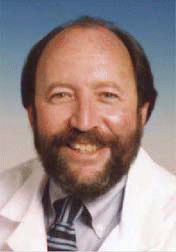The Thomas Jefferson team’s research objective was not to refute the results of studies demonstrating the advantages of PCT—that its complication rates are equivalent or better than those for the open technique—but rather to alert their colleagues that there may be relative downsides to the use of PCT.
Explore This Issue
November 2007“In the long term we may be seeing more complications than have been recognized before and it’s something we have to examine a little more comprehensively,” said Dr. Boon. Because their initial research was a retrospective study using only a small sample of patients, they are now developing a prospective study that will allow greater methodologic control.
Training for Performance of Tracheotomy
The training of residents and others who will perform tracheotomies include a few main teaching points that are easily summarized, said Dr. Boon. For open tracheotomy, which is not a challenging procedure technically, the main point is recognizing which technique to choose—either removing a small portion of a tracheal ring or making a Bjork flap and then sewing the invaginated ring to the subcutaneous tissues in order to create a track. “It is important to make the opening in an appropriate location, not too high or too low,” said Dr. Boon.
Regarding percutaneous tracheotomy, Dr. Boon considers the most important teaching points to be appropriate patient selection and the importance of simultaneous adjunctive bronchoscopy. “The person doing the bronchoscopy probably has the most important position in the whole procedure: to watch and recognize when things aren’t going according to plan, when there is too much force required to push the trach tube in, and when there is a fracture of the tracheal ring,” he said.
A third major teaching point involves the recognition of problems in the postoperative period. “A lot of patients are misdiagnosed, often with asthma,” said Dr. Boon. “The trach tube gets removed and the patient keeps going to the emergency department with complaints of airway problems; they keep getting treated for asthma [or other conditions] and aren’t getting better. Often after many weeks, they get referred to us and we recognize they have a tracheal stenosis.”
Educating Those Who Manage Tracheostomy Patients
“Most otolaryngologists are considered the airway and tracheotomy experts in their hospitals,” said Bradley Schiff, MD, Assistant Professor in the Department of Otorhinolaryngology–Head and Neck Surgery at Montefiore Medical Center at Albert Einstein College of Medicine in Bronx, NY. “But outside of otolaryngology departments, most general MDs, nurses, ICU staff, and respiratory therapists are often not comfortable managing tracheostomies. They are often unsure of what they are dealing with and unsure of the needs of tracheostomy patients.”

Leave a Reply